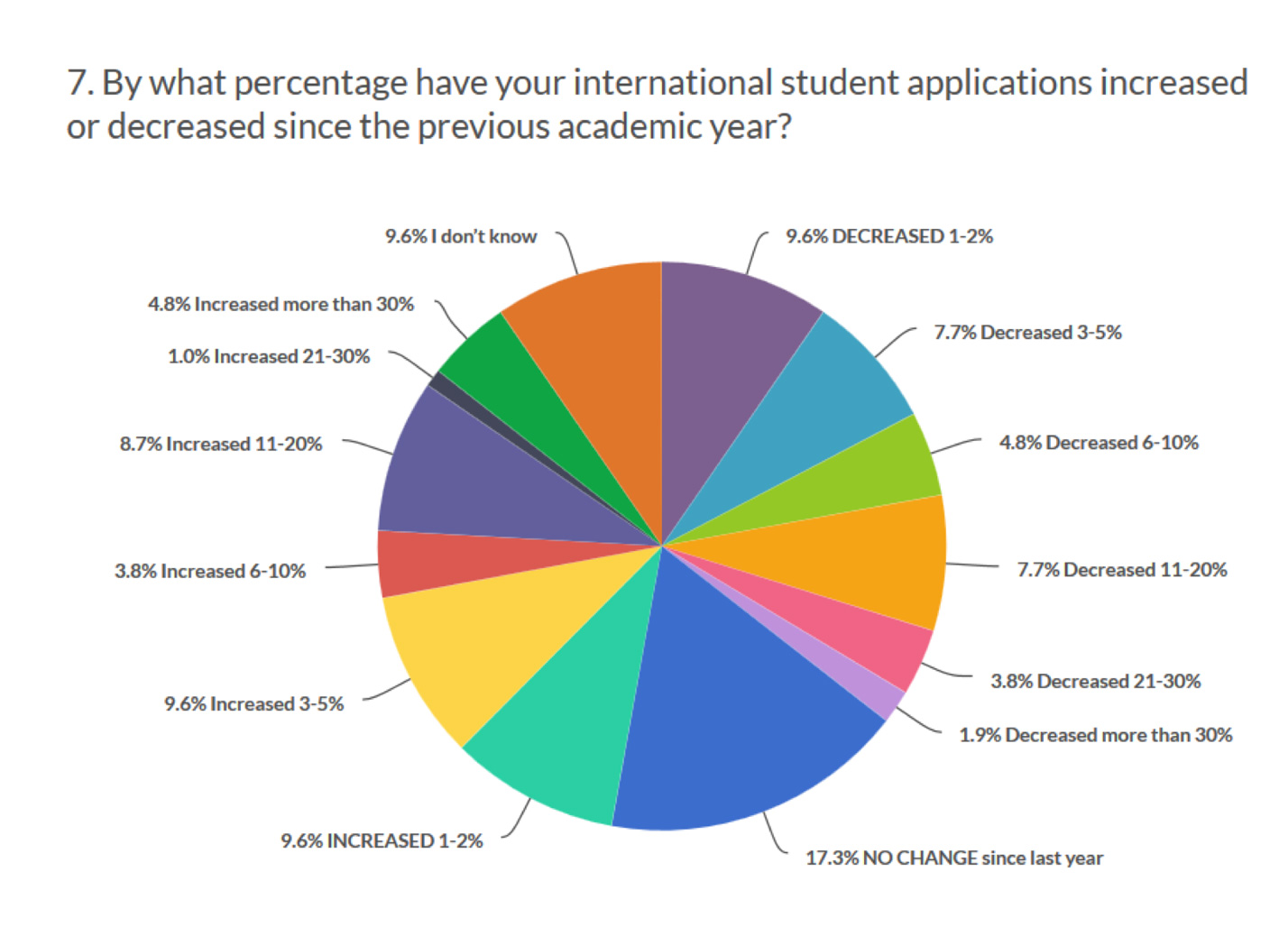
Much has been written in the last few weeks about the possible negative consequences of the current administration’s policies towards immigration. The travel ban is the latest in a series of actions or statements that include policy changes affecting undocumented immigrants already in the United States and the plans to build a wall on the southern border of the U.S.
Almost universally, reports in the news portend significant concern that the current administration’s policies will dissuade students from wanting to study here, including those students from non-Muslim-majority countries.
Academic Impressions recently surveyed more than 100 enrollment managers and international education professionals to find out what we can learn so far. While it’s too early to get exact results, we wanted to get an early indication and put some data to much of the widespread conjecture and concern.
In this article we’ll share a worrisome picture, painted with both quantitative and qualitative data.
What the Numbers Say
Attendees at AI programs and our survey data repeatedly show that the negative effects began well before the first travel ban was signed by President Trump. In fact many of our respondents (stories below) tell us of student concerns that began during the election season as immigration became a key issue and rhetoric against immigrants began to heat up.
The United States’ share of the global market for international students has already been shrinking for more than a decade, so these recent developments could very well accelerate this trend.
Here is what we found in our survey of over 100 enrollment managers.
What impact on international enrollment do you anticipate from the current White House administration’s policies?
- 44% expect HIGH impact, not only on enrollment from Muslim-majority nations, but from other key international markets (China, South Korea, India, etc.) as well
- 12% expect HIGH impact, but only on enrollment from Muslim-majority nations
- 22% don’t know
- ONLY 4% of respondents expect no impact.
By what percentage have your international student applications increased or decreased since the previous academic year?
- Decreased: 35.5%
- Increased: 37.5%
- No change: 17.4%
- Don’t know: 9.6%
Already a significant number of institutions are reporting declines in applications of 1% or more. What we don’t know, and this will impact even the institutions that are seeing increases in applications, is what the effect on yield will be. Applications are a leading indicator of enrollments, but many students had sent their applications in prior to the election and most had done so before the first travel ban was announced. If recent developments such as hate-motivated crimes or continued anti-immigrant rhetoric push yields far below normal, many institutions could see significant declines in international student enrollment.
Our survey respondents tell us that they are already seeing real effects on students from a wide range of countries including: Japan, S. Korea, Turkey, India, and China. The last two are especially concerning, as these two countries together represent approximately 45% of the international students studying in the United States.
The Stories Behind the Numbers
We will be able to measure application rates, yield, and matriculation rates and it’s very likely that many institutions will see a decline in this key demographic. What we will not be able to measure are the intangible outcomes that will be lost, here and abroad. International students don’t just benefit the institution in terms of bottom-line revenue; they are usually highly accomplished and they infuse our classrooms and communities with new ideas and new ways of thinking; they positively impact both the students and faculty they interact with.
We asked respondents to supplement the hard data they shared with any powerful stories about the impact of the White House’s policies on current international students, faculty, or staff. These are not theoretical “concerns” about what might happen in the future; these are real stories that have already had a real impact—to the responding institutions, to real students, to their families and their communities.
We think the following narratives showcase the range of responses we collected and convey the powerful and personal impact of what institutions are experiencing:
“Deeply concerned! Our Japanese enrollments are declining for the coming year and we understand that it is parent concern over the current climate in the US. This is coming from longstanding partners, so I believe it to be the case.”
————————–
“Have recently returned from a recruiting trip in India. The students’ and parents’ main concern was whether or not they are welcome and the impact of the H1-B visa. Although not directly impacted, these students hear true and untrue stories about current policy and make decisions based on this information. This is going to have lasting impacts on relations with students abroad for years to come.”
————————–
“I asked a Korean graduate student what she and her international student friends thought about the Executive Action news. She said ‘we are all scared.’ Can you imagine how that translates to family and friends back home, and how we can never really measure the impact?”
————————–
“I had one applicant remove his application because he thought President Trump did not like immigrants and that he would pay all this money and then get sent home.”
————————–
“Last year, I had 8 applications for January admission. This year I had 58 applications. There was a dramatic increase in applicants from Africa and Muslim countries. Agents telling me they were trying to get as many students placed as possible before the inauguration. Even though they qualified academically and financially, only nine received visas.”
————————–
“In the fall of 2016, I traveled to 8 countries, none of which were on the current travel ban. In every country, agents, parents and students expressed doubt about coming to the US for for fear of having their visas terminated at some point in their education. Likewise, otherwise very interested applicants decided that they would not apply (not only to my university, but to any US university), feeling that they would not be approved for a visa. Now, since the inauguration, we have had a significant number of inquiries asking for advice as to whether it is wise to apply and if it is likely that other countries will be included in the ban. More and more educational agents are turning their attention to placing their clients in countries other than the US that are more stable, such as Canada and Australia. Current international students are questioning whether they should return home or even if they should attempt to travel home for holidays, worried that they will not be able to.”
————————–
“Two brothers from Qatar, having spent their whole lives in Doha, fell in love with our school and wanted to bring their family members across generations to study with us. They have Irani passports but have never been in that country. They are considering leaving to study in the U.K. We had another graduate student, returning after a break post-language training, who could not start her program. She is Saudi, and her husband, born and raised in Riyadh, has a Yemeni passport. She cannot travel without him and may lose her scholarship from SACM as a result. She comes from a conservative family in the south, so no other male relatives support her education. She had to wait to get married before even pursuing university study, and now, her dreams are at risk.”
————————–
“We already lost an incoming student for Spring (from India) because he was worried about discrimination in the US after Trump was elected. That was before the travel ban. Since then, we’ve heard from more students who are worried about safety, discrimination, regulations, the ability to get a visa, work regulations, etc.”
————————–
“We are losing Korean and SE Asian students due to the perception that foreigners are not welcome. We had 5 students interested in our Grad program from Seoul and 4 deferred. One has enrolled in New Zealand, one in Australia, and two went to Europe. This is happening with 3 grad students from Iran and 3 from China.”
————————–
“We are hearing from concerned students across the globe that they are looking at alternatives to studying in the US. Parents are particularly fearful. US colleges still seem to be first-choice schools but kids are looking at other choices as well. Current students have expressed fear that they will be told to leave.”
————————–
“We have already seen a decline in interest from Indian students who see the US as ‘unstable’ and ‘unsafe.’ They are concerned about the elimination of OPT. Look at the impact of visa restrictions on international student enrollment in the UK over the past four years. Devastating. US universities are much more dependent upon foreign tuition than UK universities. Arab Gulf parents are reluctant to send their children to the US because they believe the US is not safe. This is our second largest market. We receive as much money in international student tuition revenue as the state awards my public university. How will we replace that loss? The economic impact is severe and will directly impact US students through higher tuition, reduced services, and quality. Equally important, our alumni hold key business and government positions worldwide and are outstanding ambassadors to the US. Most love the US and see it as a second home. Why would we want to lose an entire generation?”
————————–
“When Trump’s rhetoric began over a year ago, our ESL female Saudi students returned home. We haven’t had a hijab-wearing student since then.”
————————–
“While our application numbers are strong, I worry about yield. From the road, I’m hearing concern expressed about the “Trump Effect” in South Asia and other countries, both Muslim-majority and otherwise.”
Survey Demographics and Additional Data
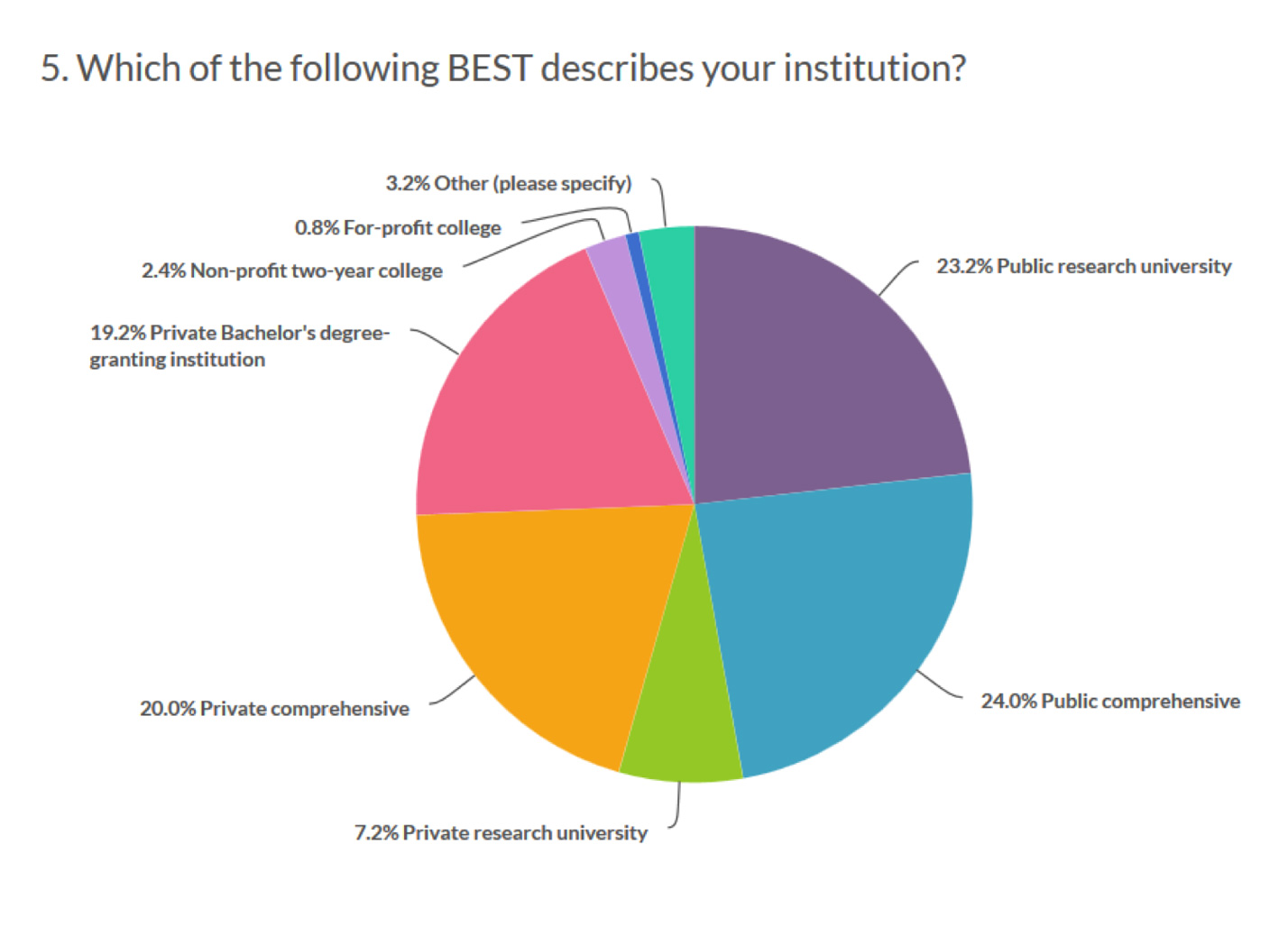
Click to see a bigger chart.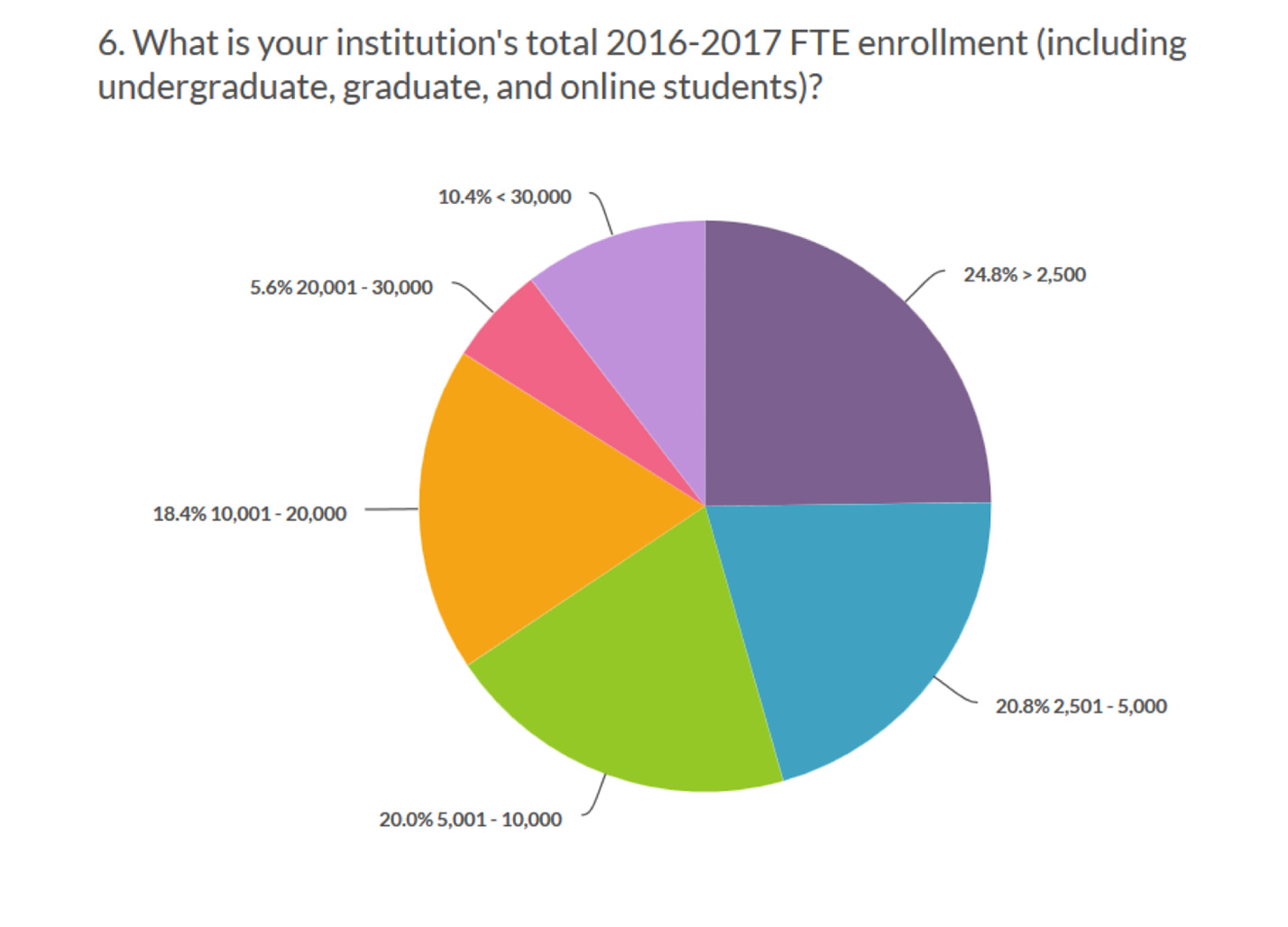
Click to see a bigger chart.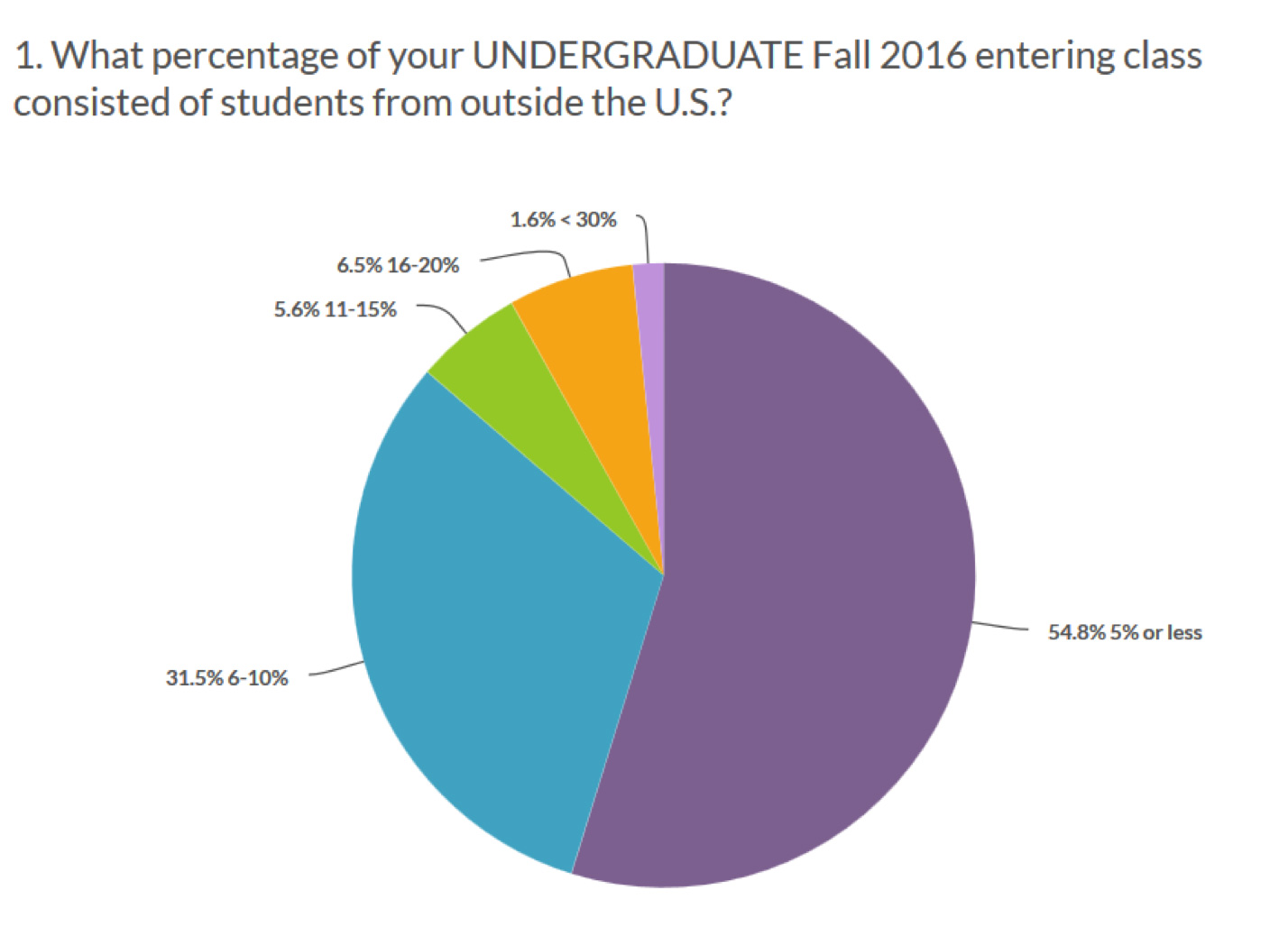
Click to see a bigger chart.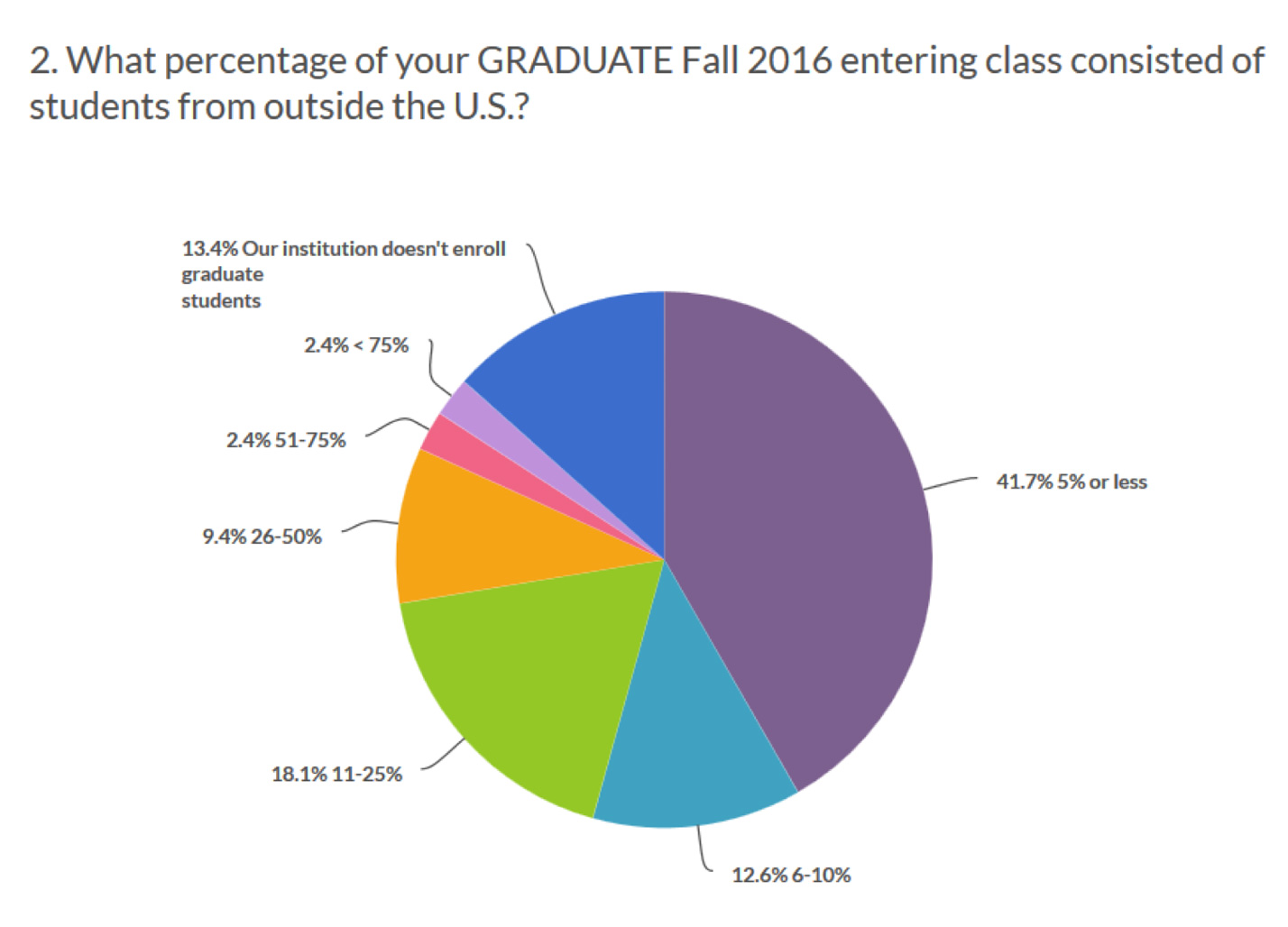
Click to see a bigger chart.
MORE FROM AI
At Academic Impressions, we keep our finger on the pulse of what’s changing in higher education and how higher-ed leaders can respond. We invite you to check out our article library and our calendar of upcoming conferences offering new thinking and practical strategies for higher-ed professionals.


